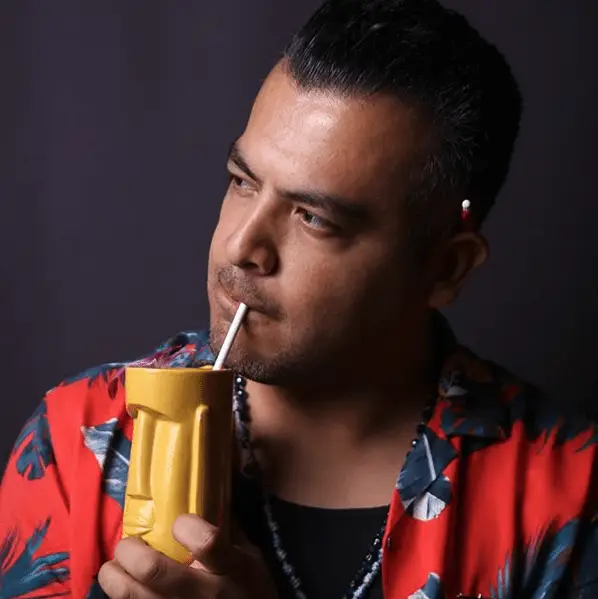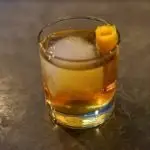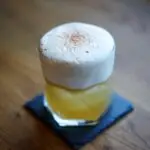Esteban De Luna is a Los Angeles-based bartender and chef that has created a large catalog of cocktails for Nankai Shochu. But he also holds a special place in Nankai’s history and ultimately, our approach to marketing to the public.
Nankai Shochu officially launched in 2018, but starting in the fall of 2017, we had started making sales calls to test the market viability of our product. Nothing scientific or organized. We just wanted to see if people would like our shochu.
We also knew that we wanted cocktails to be a large part of our marketing strategy, but we really didn’t have any ideas. And, we didn’t know any bartenders. One evening, at a friend’s birthday party at a downtown LA bar called Westbound (now known as Here & Now), I met Esteban. Sharing our mutual stories, we became fast friends, and his Nankai Shochu-based cocktails opened our eyes to possibilities beyond highballs.
Eight months into COVID, I chatted with Esteban over Zoom to catch up and to learn more about his start in the bartending industry.
Nankai: How did you get into alcohol or cocktails and discover that part of your life?
Esteban De Luna: When you’re young, alcohol is just alcohol. You know, we’re just like, “Ahhh!”
Nankai: Believe it or not, I didn’t drink in high school. And look at me now. Anyway, what was the bridge that connected your early experiences to where you are now?
Esteban De Luna: I got laid off from a job in retail that I had for years and years. I started off as a dishwasher in a restaurant. It was just a job that I needed because nobody would hire me. So one day I got curious, and I asked these guys in the kitchen, “How do you guys make the broth?”
Nankai: How old were you during this time?
Esteban De Luna: I was in my early 20s. I remember asking, “Why are you using wine?” And they told me about how different things bring out different flavors. And then I realized, “Oh, alcohol isn’t just alcohol.”
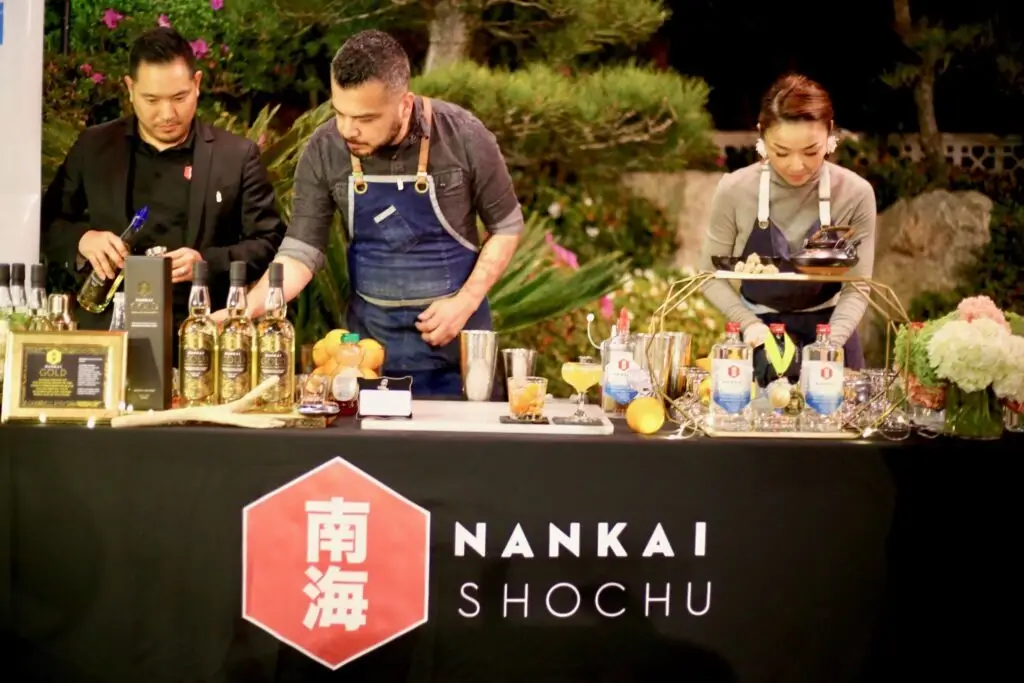
Nankai: And how did that transition into cocktails?
Esteban De Luna: The turning point for me was when I met my friend Daniel Eun, who worked for the Varnish and was one of the first bartenders for P.D.T. (Please Don’t Tell). All we did was talk shop. He’d come over and try some food, which would remind him of something and he’d make me a cocktail. Or I’d go over and he’d make me a cocktail to pair with food. I was never really thinking about bartending, but bartending came to me through coincidence.
Nankai: Did you switch from cooking to cocktails right away?
Esteban De Luna: I was trying to move to New York to become a full chef. But I ended up suffering a car accident that messed up my shoulder so I couldn’t cook anymore. I lost feeling in my left side, and I couldn’t work as fast as I liked.
Nankai: That’s horrible. When was this?
Esteban De Luna: In my late 20s. Because of that accident, I just didn’t know what to do. Do I start over yet again? I went through some depression, you know? A friend of mine in Hong Kong had a hookah joint and needed someone to run the bar side for him. I’m like, “Well, I guess I could do it.” It was gonna be for a weekend, then a little bit, and a little bit turned into a couple of months. It reminded me of when I first started cooking. When I met you actually was when I got back from Hong Kong, realized I liked it, and became a bartender.
Nankai: That’s amazing. When did you come across the whole craft cocktail movement? Was it through your friend Daniel from PDT or your own experimentation?
Esteban De Luna: Well, it was definitely through my friend Daniel that I realized that bartending is not necessarily just “I’m gonna get you fucked up.” But it was more about understanding what you’re serving. For example, not every rum is the same. I can make you a daiquiri with a clear rum and take those same specs with a dark rum, and it’s going to have funkier notes. So, there’s understanding and balancing ingredients. That’s why when I jumped into this, I decided to treat [bartending] like cooking. Understanding the flavors and really tasting something.
Nankai: It’s crazy that I met you just as you were diving deeper into bartending. Nankai was your first shochu, right?
Esteban De Luna: My friend Daniel is Korean so I went to a lot of noraebangs (karaoke). And I drank a lot of soju. So, I know soju. And you were like, “No, no, no, no. Show-chew.” Then I tried it and it was not soju. You could taste the sweetness, and you can taste the fermentation. For being so light and clear, you can taste a lot of things from Nankai. So when you asked me to make a cocktail with it, I realized adding just one thing could enhance it, so I was, like, “Oh, Amaro Nonino, let’s try that.”
Nankai: And that was a game changer for us. We never even thought to mix our shochu with something inherently on the bitter side.
Esteban De Luna: Yeah. Just add one thing, and here you go. Bam you don’t need much with Nankai. And I think that’s like me. I love Japanese culture, and I love that whole concept of “less is more.” I used to do judo which was about maximum efficiency with minimum effort. It’s like I want to do more with it, without doing a lot to it.
Nankai: That’s a great way to think about it. To take a judo approach to cocktails.
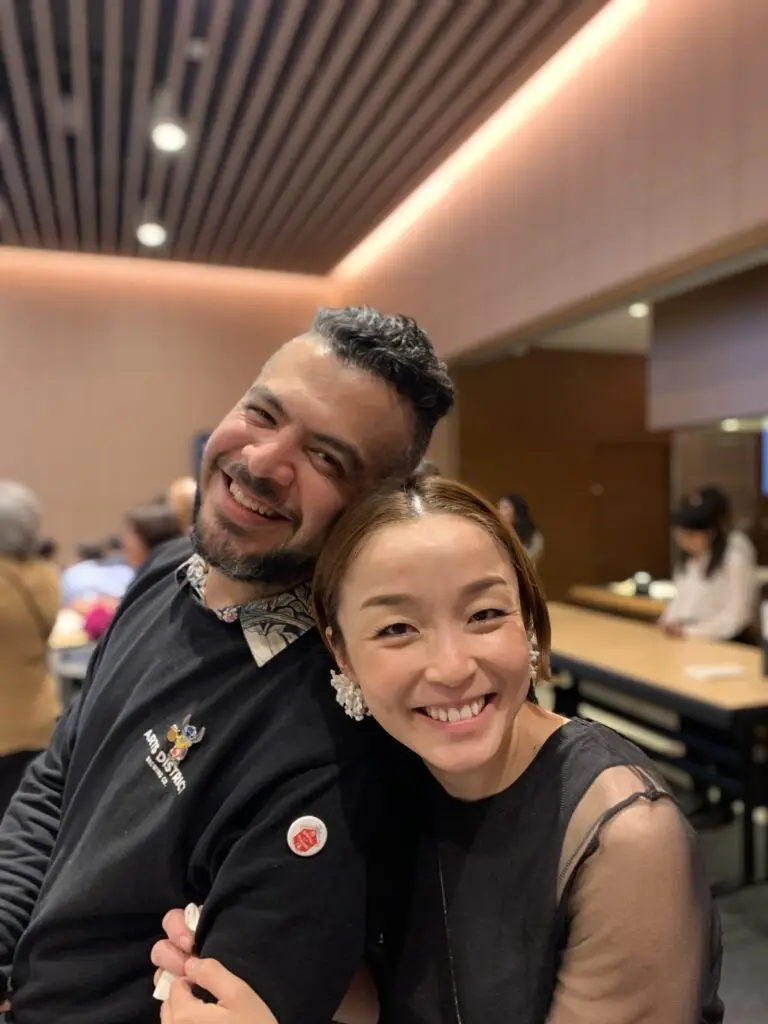
Esteban De Luna: I think that’s my concept behind any cocktail I make. If I’m going to serve you Nankai, I’m going to enhance the Nankai. I’m not gonna use a quarter ounce of it so then all you taste is lime or whatever. You know what I mean? When you came out with Nankai Gold, I knew a good Old Fashioned would go a long way with it. Or a properly made Manhattan.
Nankai: Meeting you definitely jumpstarted our cocktail education. We didn’t even know about amari at the time. That’s always gonna be part of our history. How did you get educated in bartending? Did you take classes or on the job?
Esteban De Luna: It’s always on the job. Cooking, too. I learned on the job. If I finished early with my dishwashing duty… I’m one of those people. I hate being idle. So I would offer to help peel potatoes. Nobody wants to peel potatoes. And after that I asked what to do next.
“Well, cut those potatoes.”
“How do you want me to cut them?”
“Julienne cut them.”
“I don’t even know how to hold a knife. Can you show me how to hold a knife?”
I went from peeling potatoes to making the base of a stock to eventually making the actual dish. So when I came into cocktails I used that same mentality, like “What’s a jigger? What’s a Boston tin? Why should I shake this and not that?” You know, like just understanding the basics.
Nankai: You’re a patient learner.
Esteban De Luna: When I teach people now, I use the same mentality. I’m not gonna teach you how to cook meat until you can do vegetables. If you want to learn how to bartend, make a daiquiri because there are only three ingredients. It’s easy to make, but it’s so easy to fuck up. Once you know how to do that, switch the rum for bourbon, the lime for lemon, and the sugar for honey, and you have a Gold Rush. From there, switch the bourbon for gin, and it’s a bee’s knees. So by learning one, you have 3, 4, 5 cocktails in your hand. And from there you just naturally learn how to balance the flavors.
Nankai: It’s funny. Another bartending friend of ours referenced the daiquiri a lot, too, and it seems to be a popular template for starting the bones of a new cocktail idea. Is that where you usually start too?
Esteban De Luna: You can tell a good bartender if they know how to balance a good daiquiri because either they’ll over-dilute it by shaking it too much, or they’ll add too much sugar or lime. Once you make a good daiquiri, I can trust you to make me a very complicated cocktail because you understand this delicate balance between three ingredients.
That’s what made me really happy the first time you showed up. After you tried my “Lighter Shade of Brown” cocktail, you trusted me enough to do something with your spirit.
Nankai: I remember! It was a mezcal drink. It gave me ideas because mezcal is one of the closest to shochu in terms of how it’s made. Shochu is single-distilled while mezcal is double-distilled. But, yeah, it’s always fun riffing with you on new shochu cocktail ideas.
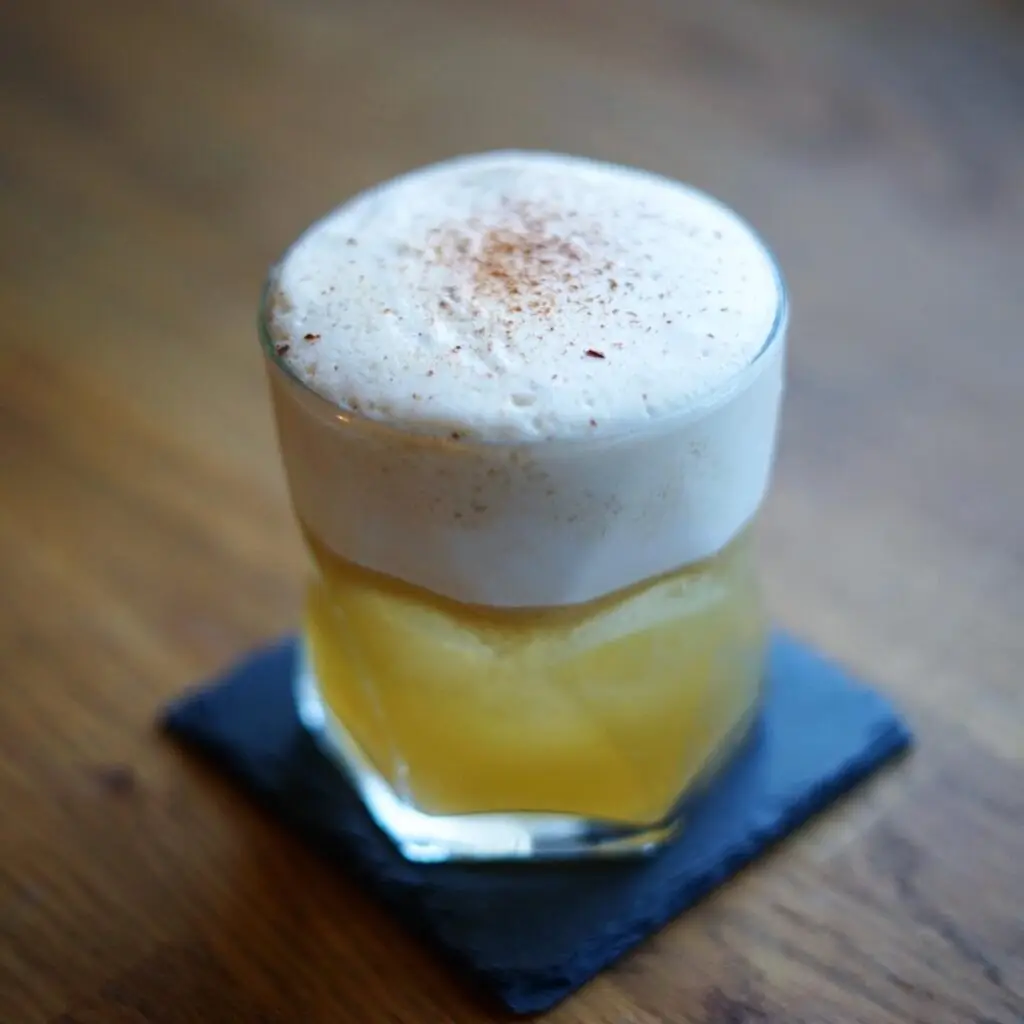
Esteban De Luna: For sure. One of the best times I’ve had with you was when we came up with “Coffee-san.” There were other people at the bar that would try it, too, and it was like a group brainstorming thing.
Nankai: I remember the two school teachers.
Esteban De Luna: Yeah. They would always get a Tito soda or Tito something. I usually carry a bottle of Nankai with me, and one day I told them, “Just try this by itself. A little splash of water maybe.” And to this day, she always tells me she keeps a bottle at home.
Nankai: That’s amazing. It’s hard introducing our products during this pandemic, so I appreciate it, brother. And I know times are rough these days, so what’s keeping you inspired and motivated?
Esteban De Luna: To be honest, it’s the passionate people in this business. Recently, it’s just been more of a hustle to survive. Some people just do it as a side job or maybe make tips. But you can tell when the bartenders are really into the game and passionate about what they do. Like, I’m gonna give a shoutout to my friend Ava — her most recent Instagram post was about teaching people about the Penicillin. Keeping it positive during these darks times with some classic cocktails and hope.
Nankai: Speaking of teaching, a lot of people that read these interviews are people interested in learning more about the nuts and bolts of craft cocktails. Let’s start with your your ideation process — When you’re thinking of a new cocktail, what’s your starting point?
Esteban De Luna: When I design something for a specific spirit, like yours, I’ll try it and see what notes I get. And then with my culinary background, my mind would be like, “Oh, X goes with Y and that equals this.” I’ll put everything that I have in my mind into a shot glass and just try it. You always want to start with the base of what you have in your mind. And then from there you just taste and tweak the ingredients. Is it too much to citrus or too much fruit? What’s missing? And you just build from there.
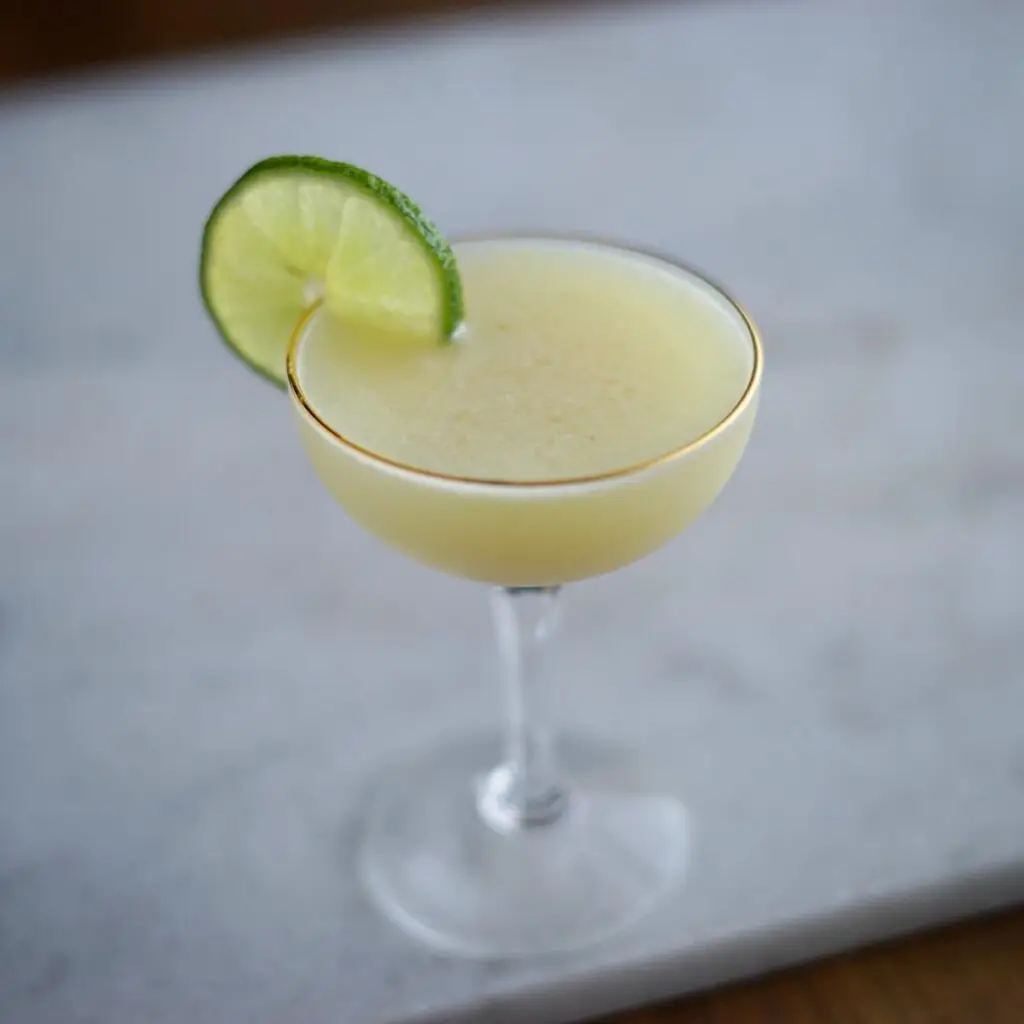
Nankai: Do you start with classic cocktails as a template to figure out where you want to start riffing from?
Esteban De Luna: Yeah. It always start with the base. If you’re building a house, you’re not going to start with the roof. Most modern cocktails start with the basics. There’s the ongoing joke about [cocktail] competitions especially when it comes to ones based on vodka. You do this and this and this and, oh guess what, you just made a Cosmo. [Laughs]
Nankai: Negroni Week is always an interesting one for me. Why do you think Negronis are so popular among bartenders?
Esteban De Luna: Because it’s easy to make. It’s a one-to-one ratio with everything. But it’s so sophisticated in what it is. It’s like the Daiquiri being a good base. If you can make a Negroni, you can make an Americano or a Boulevardier. It’s just swapping out stuff.
Nankai: To me, the Negroni is one of those drinks that became popular because bartenders loved it so much. It’s more of an acquired taste. It’s more on the bitter side of things.
Esteban De Luna: Another one that was very popular with bartenders and became popular with the crowd was the Aperol Spritz. That just blew up. And that’s a really easy one to make too. Just three ingredients.
Nankai: That’s what Nankai needs too. A signature drink where everyone asks, “What is that?”
Esteban De Luna: Nankai is amazing because it can be a Negroni, it can be a Spritz, it can be an Old Fashioned because it’s so flavorful. But honestly, it doesn’t need much. Just keep it simple and it will become one of those. Actually… [getting up] Let’s try making a Nankai Negroni. Ava, you wanna make a Nankai Negroni?
Ava: YES. I love how Nankai tastes but I also love that it has a texture. (Ava is also an accomplished bartender, having worked at the Recess Room and Red Table.)
We take a break as Esteban mixes up a Nankai Negroni with equal parts Nankai Shochu, Campari, and Carpano Antica.
Ava: That’s excellent. That’s exactly how it should be. I really like that, and the Nankai does add to it. I was curious how it was going to translate, but that’s great.
Nankai: I love how we always riff like this. Esteban, remember when we first met, you shared your tepache (fermented pineapple drink) with me? I remember that mixed with Nankai blew my mind. Is there a cultural aspect to cocktails that you want to explore or introduce to people?
Esteban De Luna: In a way, yes, but it’s like a double edged sword for me. Like, with the popularity of mezcal these days, I’m happy that people love it, but I’m also not happy about it.
Nankai: Why is that?
Esteban De Luna: Because my family makes mezcal, and a lot of families make mezcal. But they make it because they want to share something with you. It has nothing to do with profit. Like, you just had a kid, right? I would make mezcal and be like, “This is from the sweat and tears of my family to your family. Enjoy.” Or you know, if I had a promotion, you would you would make some for me. I like that mezcal is more appreciate now, but I don’t like the corporate part it.
Nankai: That’s beautiful. I didn’t know that part about people making their own mezcal as a way of expressing their love for somebody. I think that’s one of the things I love about alcohol — it can express your appreciation for someone. Did I ever tell you about the traditional way they toast on Amami Island, where we make Nankai?
Esteban De Luna: No, I don’t think so.
Nankai: Oh man, I have failed you. I’m sorry about that. Okay, so everywhere else in Japan, they say “Kanpai,” which is “cheers.” But on Amami, they say, “Hana hana.” Hana in Japanese means “flower,” so I was confused by this. Flower flower? What the hell, right? It turns out that it’s an abbreviated way of saying, “A flower for you and a flower for this moment.” It’s a sentiment that says, “Let’s share this drink to remember that we came together.”
Esteban De Luna: It’s funny that you say that. The logo I chose for my business card is the Aztec symbol for flower. I chose that because a flower represents the beginning of everything, but it’s also the end. Once it blooms, it’s on its last breath but starting a new life.
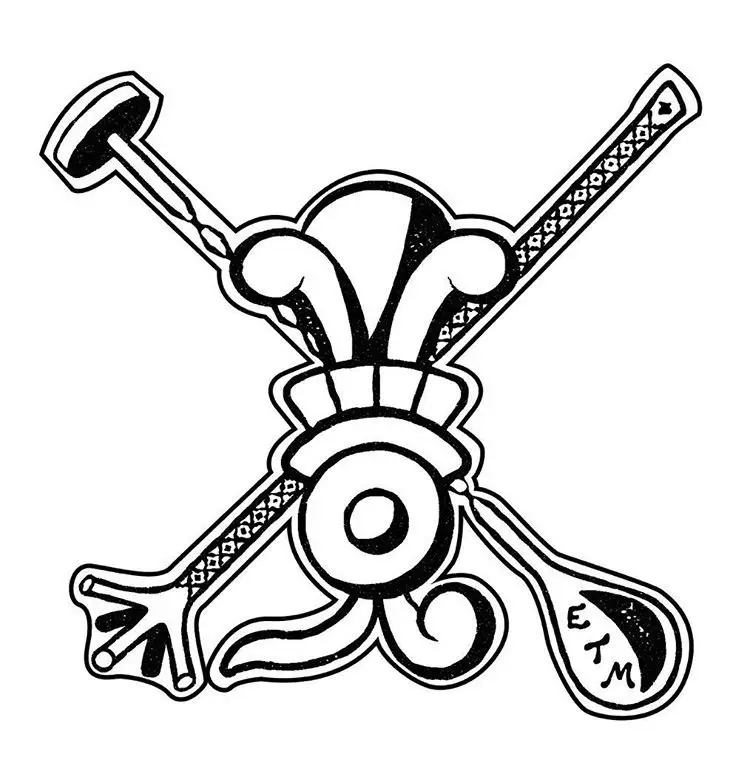
Nankai: That is so great. I love it, Esteban. What’s the word?
Esteban De Luna: The word is xochithl (pronounced so-cheel).
Nankai: I just learned an Aztec word. Pretty cool. Thank you for sharing that. So, we’ll end our interview the same way I end all of them, which is by putting you on the spot and asking you what you think of our two products, Nankai Shochu and Nankai Gold?
Esteban De Luna: [Laughs] I think I told you this from from day one. I love Nankai. It opens itself up to to anything. I mean, think about all the cocktails we made with it, can we do the same thing if we used Jack Daniel’s? I guess you could, but you wouldn’t have the subtlety of Nankai. That’s the best way to describe it. I always tell people, “You just have to try it and then you’ll see how much it opens up.” You don’t expect it when you drink something clear. But once you learn how to taste, everything is there on your tongue and it’s like that scene from Aladdin. “A whole new world~”
Nankai: [Laughs] That’s awesome and hilarious.
Esteban De Luna: But honestly, what I really love about your brand and your products, it’s focused on where it comes from, like from the natural earth and the island. We are this. We made it from here. That comes from here, and we are from here, and this is who we are. And you’re saying, “I want you to try it.” I think that’s that’s what I love about it.
Nankai: I love your take on that. It’s a great way to think about food and drink, or in our case together, cocktails, as something representing who we are and where we’re from. And then sharing it with someone.
You can find Esteban on his Instagram. And if you’d like to try some of his cocktails, below you’ll find some of Esteban’s delicious Nankai recipes. Since we really do have quite a few to share, we may save some for a future post. But for now enjoy.
Nankai Amaro
Ingredients
- 1.5 oz Nankai Shochu
- 1.5 oz Amaro Nonino Can be replaced by other amari
- 3 dashes Angostura Bitters
- 1 peel Orange
Instructions
- Combine Nankai Shochu, Amaro, and bitters in glass with large ice.
- Stir to mix and chill.
- Express peel over drink and garnish. Serve.
Nutrition
Coffee-San
Equipment
- Cocktail Shaker x 2
Ingredients
- 2 oz Nankai Shochu
- 0.5 oz Mr. Black Coffee Liqueur
- 0.5 oz Mango Juice
- 0.25 oz Pinneapple Juice
- 0.25 oz Lime Juice
- 1 Egg White
- Pinch Cinnamon Freshly shaved
Instructions
- Combine everything except cinnamon into shaker. Add ice.
- Wet shake vigorously.
- Strain and pour into another shaker. Dry shake (no ice).
- Pour into rocks glass with 1 large ice cube.
- Garnish with cinnamon shavings and serve.
Nutrition
Nankai Tiki
Ingredients
- 2 oz Nankai Shochu
- 1.5 oz Orange Juice Fresh squeezed
- 0.5 oz Lime Juice Fresh squeezed
- 0.5 oz Honey
Instructions
- Combine all ingredients into shaker with ice.
- Shake vigorously to chill.
- Strain and pour into coupe glass. Serve.

